One of the most popular copper joining methods is brazing. But you may wonder, can you braze your mini split line sets? We researched this topic, and here is what we found.
Yes, brazing is possible. Just make sure that you do it with a nitro purge.
Keep reading to know how to braze a mini split line and why you need a nitro purge when you do it. We'll also talk about the pros and cons of brazing the lines, what tools and materials you should use, and how to test the brazed connections for leaks.
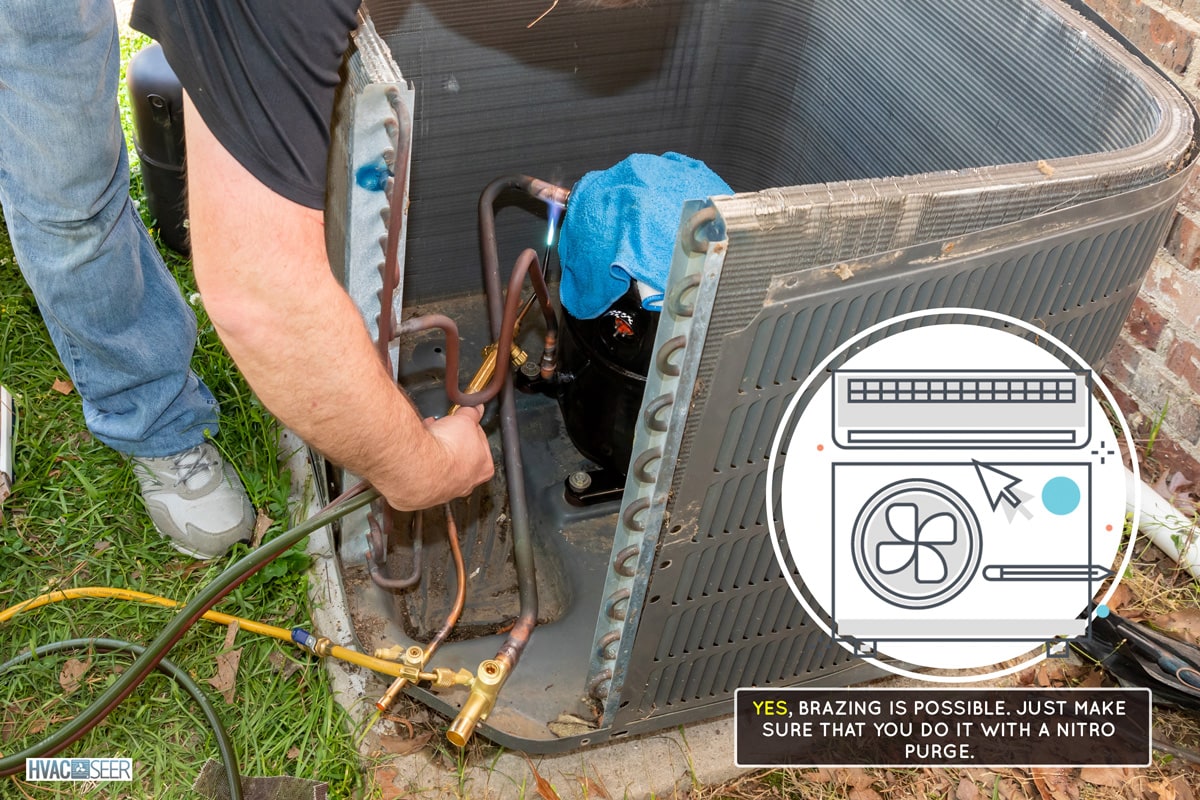
Why The Need To Purge Nitrogen When Brazing?
Nitrogen-based brazing, often known as brazing with nitrogen, is simply brazing copper while purging nitrogen through it. This keeps it tidy. Before adding refrigerant, AC systems must be extremely clean and dry. By ensuring this, you will receive the efficiency, comfort, and equipment longevity you expect.
If impurities get inside the refrigerant, the system will be harmed over time. While you may not notice these problems right away, the only option to avoid any issues is by brazing your mini split lines with nitrogen.
How To Braze Mini Split Lines
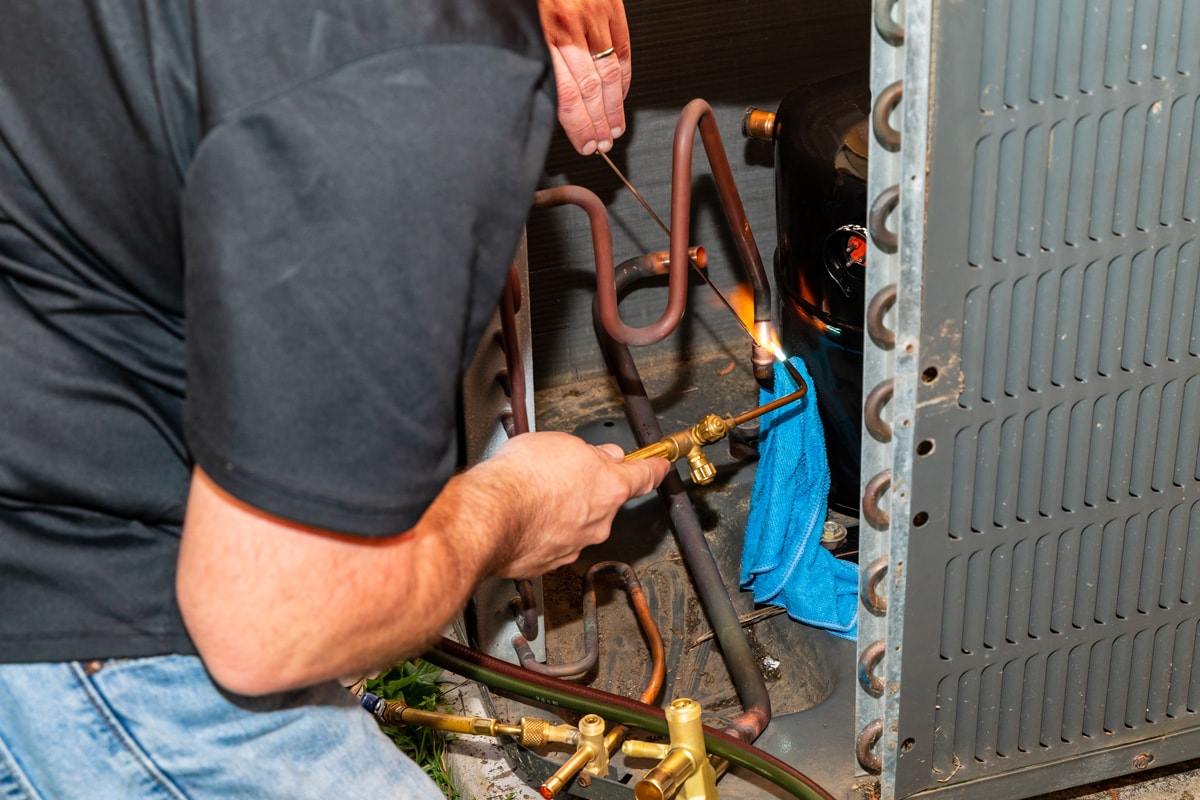
If you want to know how to properly braze your mini split tube lines, here is a simple guide on how you can do it:
1. Connect The Outdoor Unit To The Huge Suction Line
First, connect the outdoor unit to the huge suction line tubing by flaring it. The end of the little, line-set tube shouldn't be attached at this time; it should remain unconnected.
The active metering device of a micro split system is often located in the outdoor unit; therefore, during the cooling mode, the metering device will lower the pressure of the refrigerant before it enters the small line set tube, hence the term "low-pressure liquid tube" for the small line set tube.
2. Cut Off Flare Connections On The Indoor Unit
The indoor unit copper stubs will need to have the flare connectors removed, and the copper tubes will need to be reamed downward so that any small bits of copper will fall out of the tube.
The large and small line set tubes should be run into position and inserted into the swaged copper stubs from the indoor unit.
3. Connect A Flow Regulator To The Nitrogen Tank
The next step is to attach a flow regulator to a nitrogen tank and set the flow rate to 2-3 ft³/hr. The outside unit vapor service port will then be connected to the nitrogen hose.
The nitrogen will enter the large vapor line, pass through the evaporator coil, the small line set tube located next to the tiny low-pressure liquid service valve, and finally exit the small line set tube.
While the brazing process is taking place, the nitrogen will force any oxygen out of the tube rather than pressurize it. Additionally, this will assist in dehydrating the lines before vacuuming.
4. Braze The Swage Joint
Use a tiny brazing tip and 15% silver brazing rod to braze the swage joints. The swage joints can be found behind the indoor head unit, within the building while the head unit is raised upward to access the unit's underbelly, or outside the building, if the stubs go straight through the exterior wall.
When brazing inside a building or outside close to the siding, be cautious to use a heat shield.
5. Flare The Low-Pressure Liquid Line To The Outdoor Unit
The small, low-pressure liquid line will then be flared and attached to the outdoor unit flare connection after the nitrogen has been disconnected. Ensure that all flare connections are tightened to the required foot/lb torque value.
For a 1/4" outside diameter copper tube, this is typically 12 ft/lb, and for a 3/8" O.D. copper tube, this is often 27 ft/lb. However, always follow the manufacturer's directions to prevent leaks or other issues at the connections.
A pressure test to look for leaks will then be possible with the system.
How Do You Check For Leaks After Brazing Your Mini Split Lines?
There are 3 ways you can detect a leak in your AC system. These are nitrogen flushing, electronic leak detectors, and fluorescent additives.
Nitrogen Flushing
- Utilizing compressed nitrogen gas is one way to locate leaks in a system.
- An HVAC expert will do this test by draining the unit of all refrigerant, replacing the gas with compressed nitrogen, and listening for any sounds.
- Leaks emit an audible whooshing or hissing sound as nitrogen leaves the system because it is retained at a higher pressure than the coolant.
To do a leak test using nitrogen, you can follow these two simple steps:
- Depending on the type of air conditioning system, fill all of the refrigerant lines to a pressure of between 300 and 500 psi with nitrogen gas to perform a pressure test.
- After that, give it a 24-hour break before returning to see if the pressure reading has changed.
Electronic Leak Detectors
- You can find specific refrigerants using instruments called "sniffers" or electronic leak detectors.
- These portable detectors frequently offer the test that is the most affordable, but they can also be wrong.
- It is necessary to place electronic leak detectors on any surface that might leak to scan it, which can be quite difficult in confined spaces.
Click here for this product on Amazon!
Fluorescent Additives
- Quick leak testing with an efficient maintenance tool.
- Can be messsy.
- After a spill, the additive needs to be wiped up. To prevent the additive from circulating in the pipework and parts between the oil separator discharge and compressor suction, coalescent oil separators remove it.
Click here for this product on Amazon!
What Are The Pros And Cons Of Brazing Mini Split Lines?
Here are some pros and cons you need to consider before deciding to braze your mini split lines.
Pros
- Brazing has several advantages to flaring, including increased connection strength, longer connection life, and lower risk of refrigerant leakage. No matter how proficient an installer is at making flares, every flare connection has tiny gaps that allow refrigerant to leak out.
- Brazing is the only process that can guarantee a fully sealed connection and completely rule out the potential of a refrigerant leak.
Cons
- The biggest drawback of brazing is the level of expertise needed to do it correctly. Most HVAC technicians lack the necessary training for this technique, and even fewer installers possess the necessary tools for the job.
- In addition to requiring more skill, brazing a connection requires more time than flaring one. While it only takes 15-20 minutes to finish a brazed connection, a flare connection only takes 5-10 minutes to finish.
- Your copper lines will oxidize after you torch them due to the high temperatures involved in brazing. In other words, anywhere they are exposed to air, or more specifically, the oxygen in the air, little flakes of burned debris and soot will accumulate on them. This could cause particulates to enter your heating or cooling system, which is something that should never happen.
What Tools To Use When Brazing?
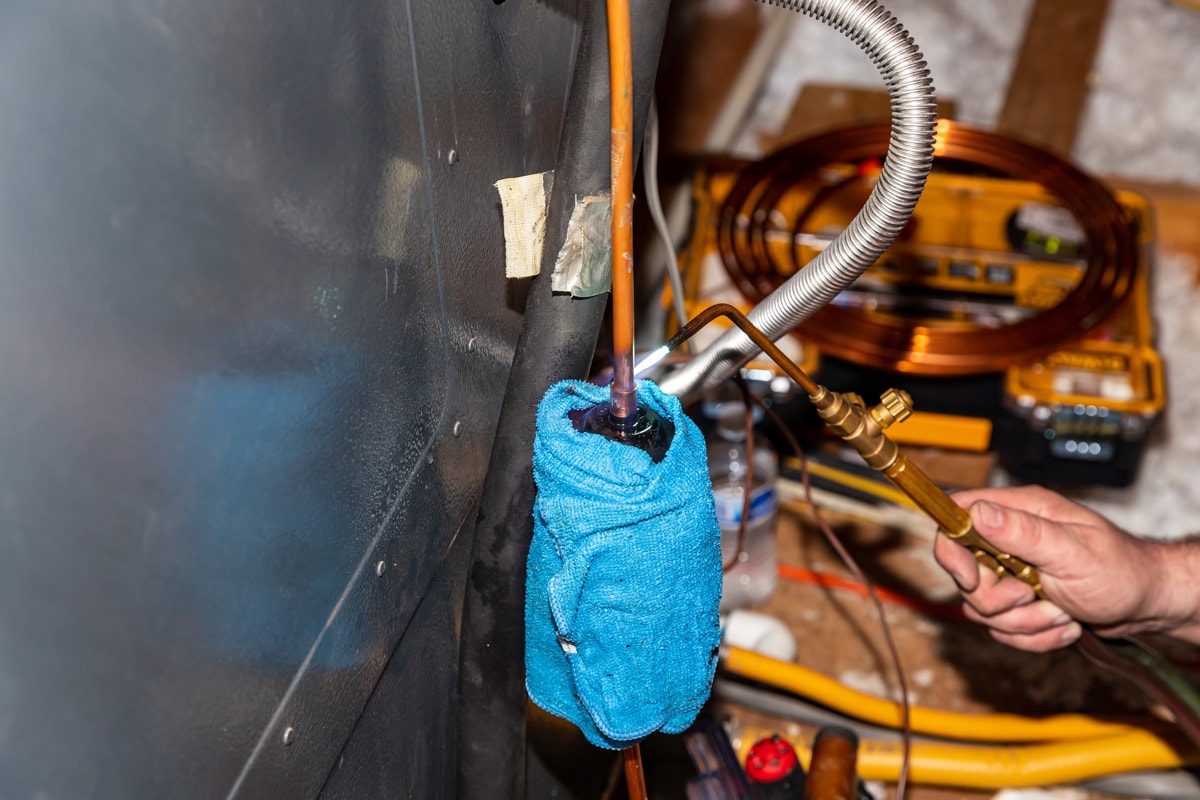
Here are some of the tools and materials used in brazing:
Oxygen-Acetylene Torch
Using an oxygen-acetylene torch is your best bet because it heats up faster than a MAPP gas or propane torch. This is vital since brazing requires greater temperatures than soldering, though a turbo torch should also work for the majority of small-to-medium tasks. Keep in mind that propane burns hotter than MAPP gas.
Be aware that it takes practice to set up the flame on an oxy-acetylene turbo torch. To get the appropriate kind of flame, you must understand how much of each gas you should balance out.
Brazing Rods
Similar to solder, brazing rods get stronger as their silver content rises and resemble straightened metal coat hangers. The braze is what the torch melts to connect two metals.
Brazing rods consisting of a copper-phosphorous alloy are typically used to link copper lines. This kind of brazing rod begins to melt at 2174 °F and contains 6% silver.
Click here for this product on Amazon!
Will Brazing A Mini Split Void Its Warranty?
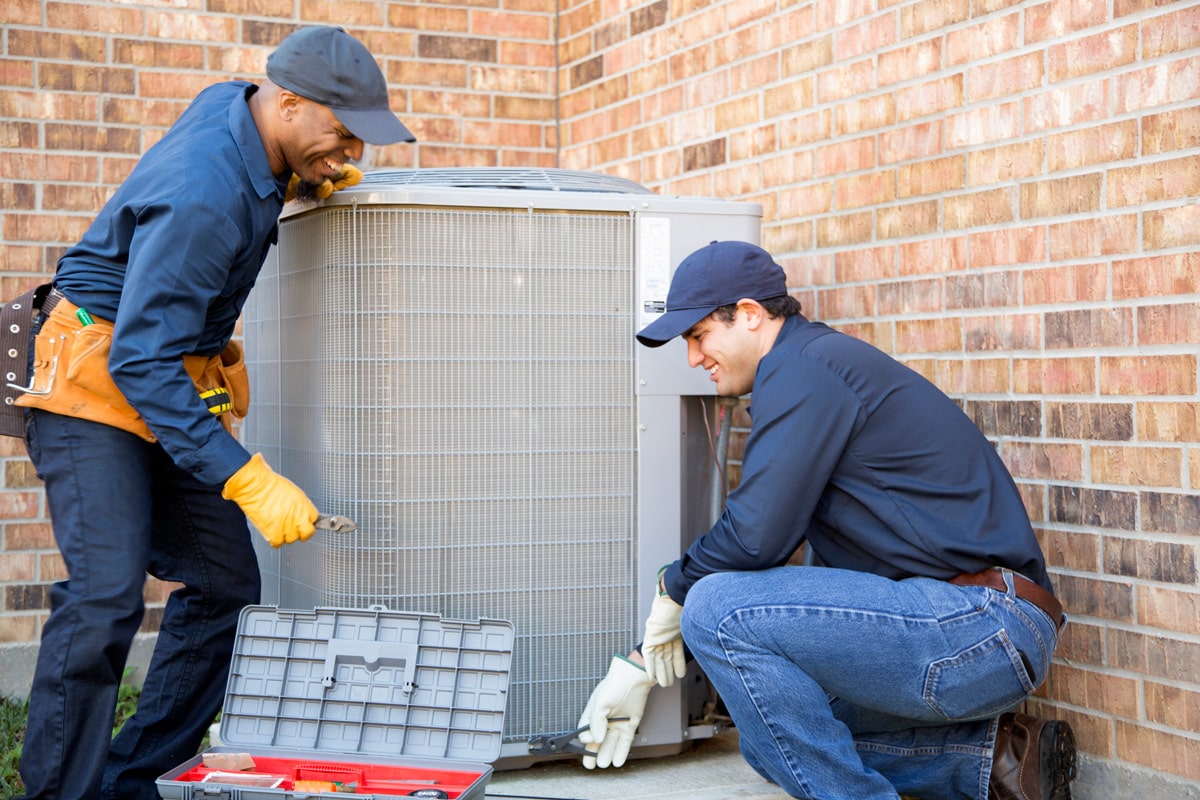
Technicians should personally confirm this with the maker of the specific device they are installing.
If your HVAC system isn't installed correctly, it may have a variety of issues throughout its lifespan. Guarantee clauses state that improper installation renders the warranty null and void.
Always work with a qualified HVAC contractor who is knowledgeable about your particular equipment if you want to make sure the replacement equipment is still covered by the warranty.
In Conclusion
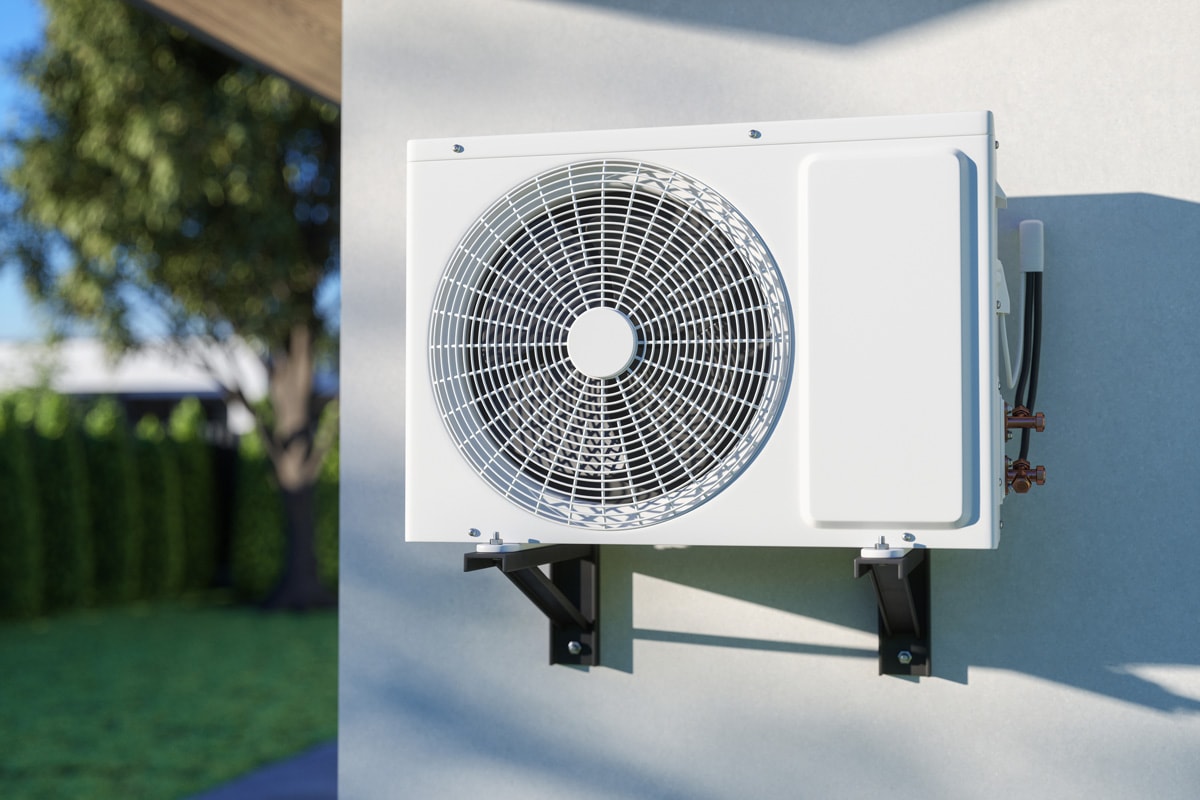
You can braze the copper lines of your mini split air conditioner. But to avoid any damage to your unit, braze it while connecting it to a nitrogen source. This will help in preventing impurities from getting into your AC system.
Additionally, only qualified and trained professionals should do the brazing to ensure that there won't be any leaks in the future.
Before you leave, you can check out these related articles:



